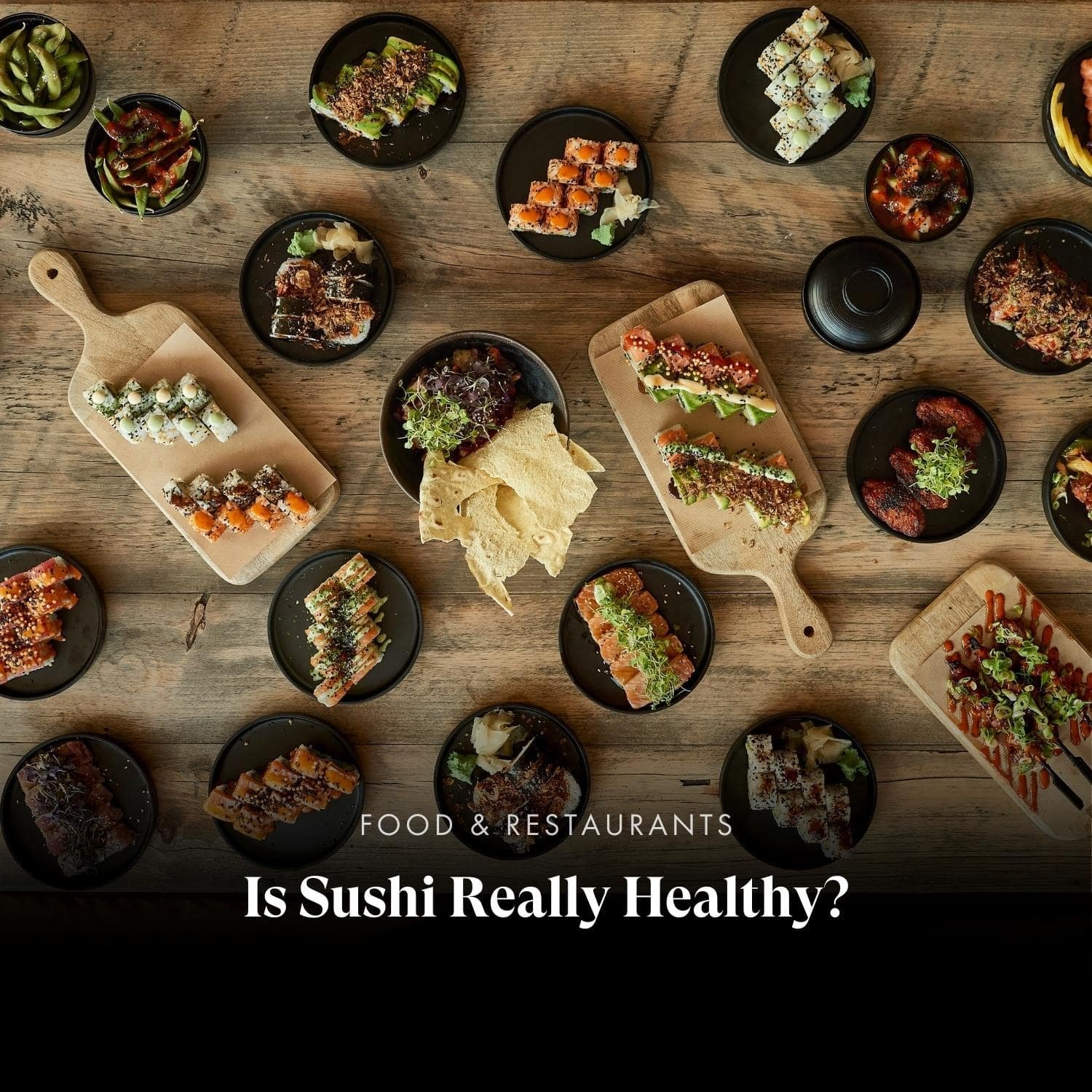The History of Sushi: Which Country Invented the Iconic Dish?
You’re at the local with your mates, it’s quiz night and the blindingly obvious question comes up of ‘which country invented the iconic dish of sushi’. You offer up ‘Japan obviously’, scribble down the answer and drop the pen back on the table with breezy confidence, rolling your eyes at this easy question. It’s answer time and another team are questioning the quiz master’s decision - ‘well, actually, you’ll find that sushi isn’t actually from Japan…’ (there’s always one).
Well, move over team ‘let’s get quizzical’, it’s time to officially find out where this delicious rice-based delight originates, bonus trivia points incoming…
The origins of sushi (clue…it might not be Japan)
Much like many of the world’s best inventions, sushi was created to fix a problem, in this instance to stop fish from going bad. Whilst Japan holds the trophy for longest serving commitment to sushi and arguably is now the cultural owner of sushi, the earliest form of sushi, a dish today known as Narezushi, actually originated in China, Southeast Asia where it was made to preserve freshwater fish. Fish, typically freshwater varieties, were fermented with rice, salt, and vinegar to create a tangy, preserved food source that could be stored for months. The rice was discarded, and the fish consumed when needed.
In Japan the dish's distribution overlaps with the introduction of wet-field rice cultivation. Japan also adopted this method of fermentation making it an invaluable resource to Japanese fishermen and travellers and revolutionised how the Japanese consumed fish - here comes the raw fish revolution!
The word 'sushi' (寿 司) is constructed from the words 'su', which signifies 'vinegar' and 'shi', which signifies 'rice' so is literally and literarily more to do with the rice than the fish. Of course the sushi of ancient Japan looks very different to the intricate sushi of today, so let’s explore the evolution of sushi from simple fare to a culinary art form.
“Think of the sushi trend that started in the ‘80s. It was as much about the Nintendo entertainment system in your living room as it was about the availability of good-quality raw fish. The Japanese food trend rose as the world of Japanese business and culture was becoming a bigger part of American life.”
The evolution of sushi in Japan
In the early days (and when we say early, we mean around the 8th century so really early), sushi was predominantly a food for the working class, but over the years (and when we say years, we mean centuries) it gradually gained popularity among the upper classes as well. As sushi became more and more en vogue, chefs began experimenting with new ingredients and techniques, leading to the creation of many of the sushi varieties we know and enjoy today.
Sushi looks very different to how it originated and we love the look of it here at our own restaurant at Netil360 Rooftop Restaurant!
Over time, the Japanese began to appreciate the unique taste and texture of the fermented fish and rice and in the 14th century Nigiri sushi was invented, resembling the sushi we know today. Street vendors in Tokyo started selling a simpler form of sushi, where small pieces of raw fish were placed on seasoned rice and consumed immediately, becoming very popular with the locals.
The spread of sushi around the world
While sushi took dominance in Japan, it has become a beloved dish worldwide. Skipping a few centuries of evolution, refinement and growing cultural importance in Japan brings us to modern day popularity of sushi. Following World War II, Japanese immigrants brought sushi traditions to the United States, where it initially faced skepticism but in the 1960s, sushi began to gain popularity, particularly in California. So much so the ‘Californian Roll’ was invented by a Los Angeles sushi chef called Ichiro Mashita in little Toyko.
Firmly establishing itself as the arbiter of cool in Cali, sushi gained popularity and spread to other parts of the country and on to other countries around the world. Today, you can find sushi restaurants in almost every major city (did we mention we have an awesome sushi restaurant on top of Netil360? here in London), and many people enjoy making sushi at home as well (see our ‘how to make sushi rice at home article’ ). Despite its growing global popularity, sushi still remains deeply rooted in Japanese culture and tradition.
Japanese sushi restaurant.
The cultural significance of sushi
Sushi is not just a delicious dish, it also holds great cultural significance. In Japan, sushi is considered a form of art, with chefs spending years perfecting their craft. It is also a symbol of hospitality and respect, often served to guests as a sign of appreciation. Sushi has also become a popular dish in many other countries, with each culture putting their own spin on the classic dish.
Sushi of today
From its humble beginnings as a preservation technique to its status as a sophisticated culinary art, sushi remains the go - to healthy and delicious food across the world. We at Netil360 are devout fans and love bringing a little bit of a unique London flair to our sushi dishes, whilst respecting the centuries of culinary craftsmanship from Japan (and beyond!).
So, we hope you enjoyed our little insight into the history of sushi, wherever it originated, we hope it continues to be on menus in years to come (and when we say years, we mean centuries!).
-
While Japan is definitely the sushi capital of the world and thanks to Japan, it was introduced to travellers across the globe, sushi traces traces its origins back to a Chinese dish called Narezushi. This dish was made up of fermented rice and salted fish. Despite what you may think, it wasn't fermented and salted for flavour, it was fermented to preserve the rice and fish.
Netil360 restaurant is inspired by the Japanese way of eating called izakaya where your food will come out when it’s ready, so order as much or as little as you like, you can always come back for more.
-
Today's sushi is most often associated with Japanese culture, though the many variations of sushi can actually be traced to numerous countries and cultures including Japanese, Korean, and Chinese.
-
This may be surprising to know (unless you’ve just read our article), as most people assume that sushi was first created in Japan. However, the dish originated in China with a Chinese dish called Narezushi.
-
Now we can thank the Japanese for this as the practice of eating raw fish began in the Edo period in Japan (1603-1868), when sushi was first introduced to the country. However, Sashimi became popular in the United States in the 1980s, when Japanese cuisine began to gain popularity outside of Asia.
-
In the 18th century, a new type of sushi emerged in Japan that revolutionised the cuisine and paved the way for the modern-day sushi we know and love. This style of sushi, known as Edo-style sushi, was created in the city of Edo (now Tokyo) and quickly became popular among the city's residents.








